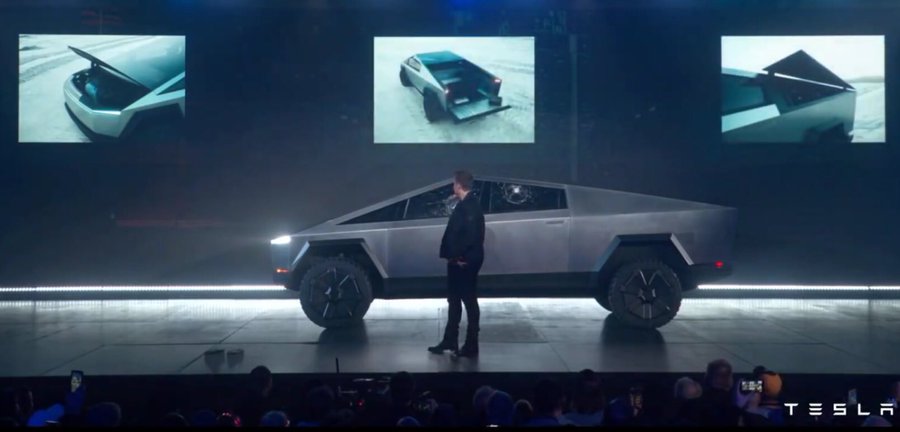
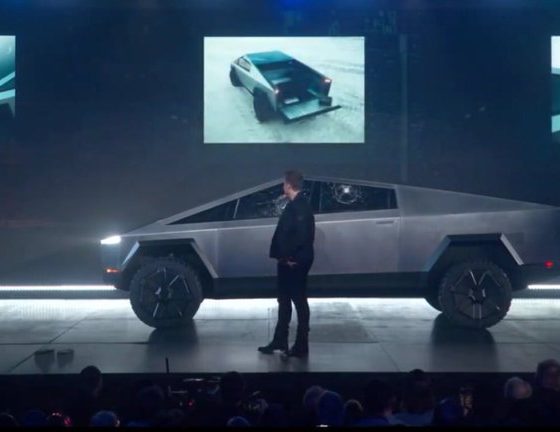
News
Tesla on hold as Texas court debates Cybertruck factory impact on taxpayers
Texas county officials where Tesla is seriously considering a Cybertruck factory are still debating over an incentive package to help bring the electric carmaker to the Lone Star State.
After two nights of discussion on the pros and cons of the move, the Travis County Commissioners Court has again postponed a vote on the matter to a date next week; however, from the recent comments, it’s clear that while many local executives and business leaders are optimistic about the economic benefits of Tesla’s presence, they have concerns about taxpayers and worker benefits.
During the Court’s session on July 7th, itself a continuation of a discussion on the matter in the prior week, several community call-ins indicated a wariness towards large employers that may not have the local taxpayers and employees’ best interest at heart.
“We are enthusiastic about companies that would like to come and take advantage of our vibrant culture and economy. With regard to Tesla, we’d like to affirm they are welcome, and that as long as they are spending their own money they are welcome to come on their own terms. If, however, they want local taxpayers to help pay for their move, the county needs to hold Tesla accountable to the same standards that it holds itself accountable to. In particular…a livable minimum wage,” commented Michael Floyd, a leader within the All Saints’ Episcopal Church in central Texas.
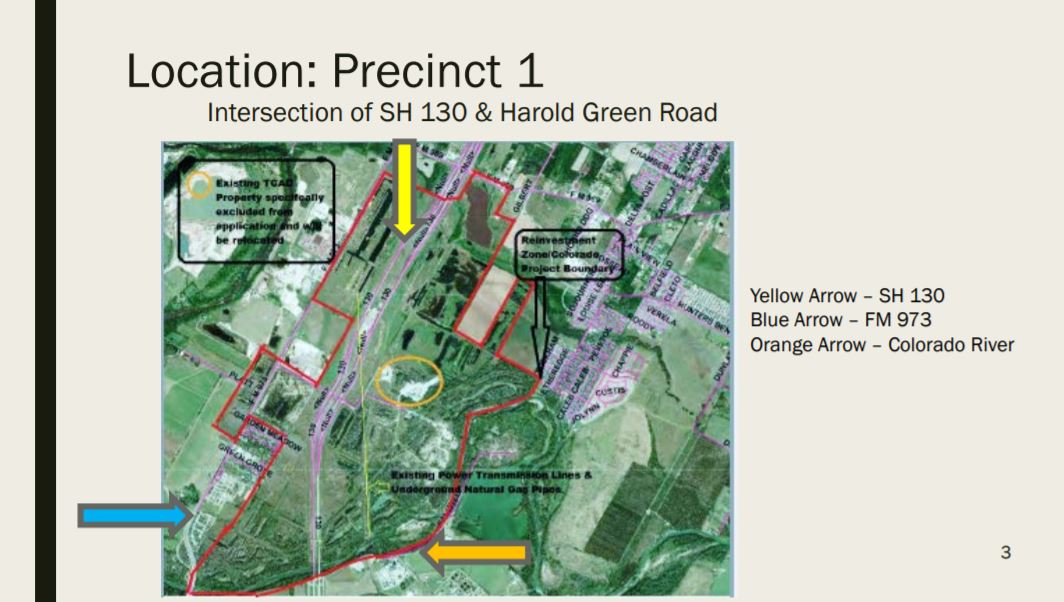
Jessica Wolff, deputy policy director for Workers Defense Project added, “Tesla has said that they will provide 5,000 middle skilled jobs. Our community needs more transparency. We need specifics. What types of jobs? How many will be temporary vs. permanent? What are the starting wages and benefits each will receive?”
Notably, Tesla seems to have provided fairly specific wage and benefit information in a presentation considered by the Travis County Court on June 23rd this year. Tesla’s impact on the Reno, Nevada community surrounding Gigafactory 1 could also be a positive testament to the carmaker’s potential benefit to Texas.
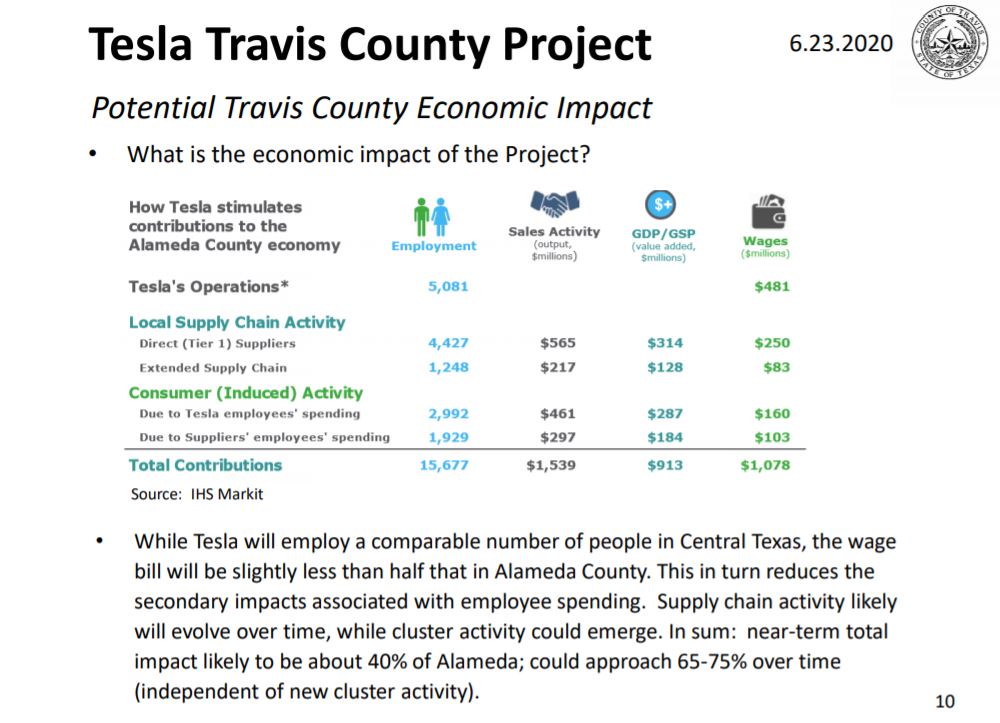
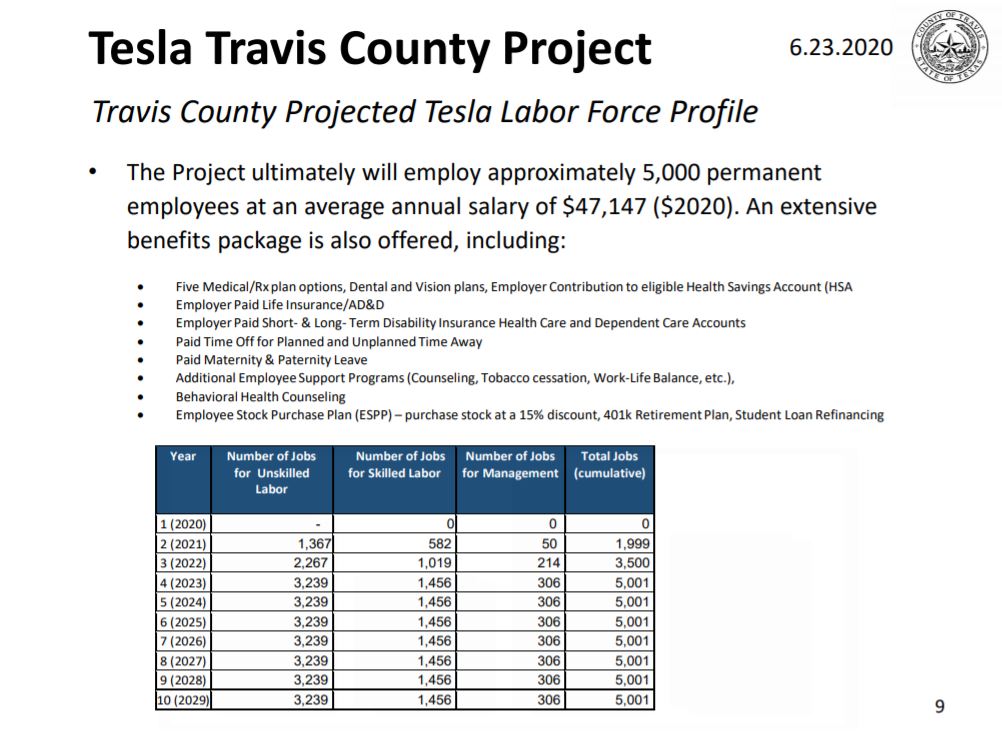
Manuel Quinto-Pozos, representing the UAW and himself as an employment lawyer, agreed with Wolff’s comments and requested that Tesla expands on its concerns with previously discussed building standards. Jeremy Hendricks, representing local construction labor unions, also requested complete transparency in the onboarding process to ensure minimal pay and safety for workers. On a more negative note, caller Juan Bellman was completely opposed to any incentives being offered by the community. “I wanted to oppose Tesla receiving any economic development incentives,” he said bluntly. “As mentioned, I went to Travis High School and I know that my community does not need a multi-billion [dollar] company coming and receiving those taxes that I know the community needs more than them.”
The Court reconvened on July 8th where the call-in comments were more enthusiastic about the economic prospects from Tesla’s presence.
“I’m calling to urge you to approve this deal and bring Tesla to the region,” rallied executive director Ed Latson of Austin Regional Manufacturers Association (ARMA). “We think it’s an extraordinary opportunity, a political win, a cultural win, and an economic win that we have never seen. This court has the opportunity to bring hundreds of millions of dollars of economic impact to a region that has been neglected economically…[and]…impacted negatively by the current economic conditions and really give them skills and a pathway to the middle class.”
The incentives being discussed are property tax rebates worth around $15 million dollars over the course of ten years. In addition to economic incentives from Travis County, Tesla is pursuing a school tax abatement request with the Del Valle Independent School District which would save the company around $50 million over the same ten year time period. Their application package has been submitted and approved, but the District’s Board has yet to take a vote on the matter. Tesla’s decision on whether to make the Austin area its new home may hinge on gaining these tax approvals and community resistance may also explain CEO Elon Musk’s continued consideration of Tulsa, Oklahoma as an alternative location.
The Travis County Court again postponed a vote on the incentives after the July 8th session, the judge indicating that another discussion would be held on July 14th.

News
Another Tesla Model 3 variant sold out for January 2026 in China
A look at Tesla China’s order page shows that new Model 3 LR RWD orders now have an estimated delivery date of February 2026.
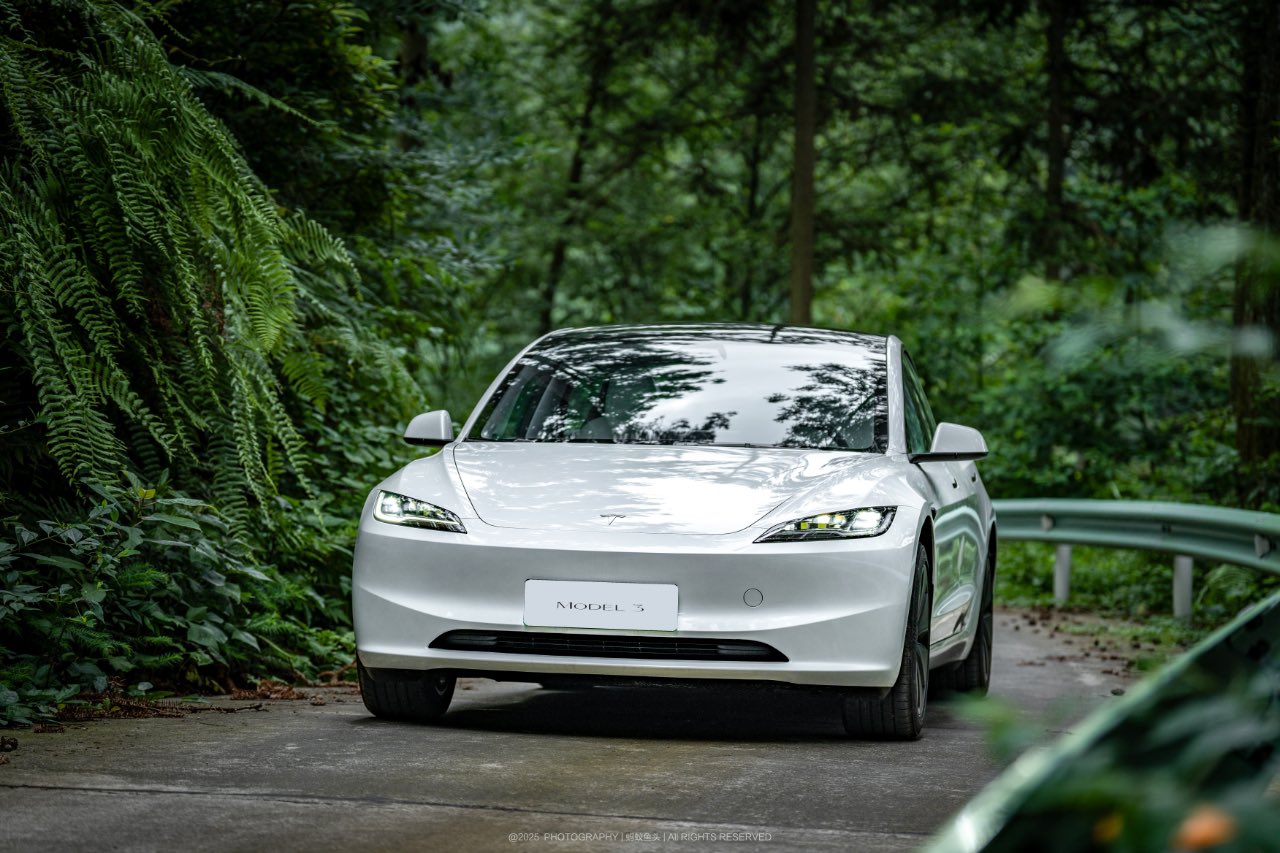
Another Tesla Model 3 variant in China appears to have sold out for January 2026, with the vehicle now showing an estimated delivery date of February 2026 for new orders. This bodes well for the all-electric sedan, which has maintained notable sales despite more affordable rivals like the Xiaomi SU7 and its crossover sibling, the Model Y.
Model 3 LR RWD joins February 2026 queue
A look at Tesla China’s order page for the all-electric sedan shows that new Model 3 Long Range Rear Wheel Drive orders now have an estimated delivery date of February 2026. Priced from RMB 259,500 ($36,810), the LR RWD sits as the second-lowest-priced trim in Tesla China’s four-variant Model 3 lineup. The move follows a similar delivery timeframe for the Model 3 Performance, which remains the most expensive option for the vehicle, as noted in a CNEV Post report.
The estimated delivery dates of the two remaining Model 3 variants remain unchanged for now. The base RWD version, starting at RMB 235,500, and the LR AWD variant, priced from RMB 285,500, both continue to list estimated delivery times of 4-6 weeks. Tesla China, for its part, has continued to list in-stock Model 3 vehicles and is actively encouraging buyers to select inventory units for delivery before the end of the year.
Model Y delays and policy shifts
Delivery timelines for the Model Y in China are also stretching into 2026. All customized Model Y variants now show February 2026 as their estimated delivery date, except for the entry-level version, which still lists January 2026. Tesla has been urging customers since November to prioritize purchasing inventory vehicles, a push aimed at maximizing year-end deliveries.
Timing matters for Chinese buyers due to upcoming changes in government incentives. China’s new energy vehicle purchase tax exemption will be scaled back in 2026, which means customers who take delivery next year could face higher tax costs compared to those who are able to receive vehicles before the end of the year.
As per data from the China Passenger Car Association, Tesla recorded retail sales of 73,145 vehicles in November, down 0.47% year over year. From January through November, Tesla’s retail sales in China totaled 531,855 units, a 7.37% year-over-year drop.
News
Wedbush’s Dan Ives sees ‘monster year’ ahead for Tesla amid AI push
In a post on X, the analyst stated that the electric vehicle maker could hit a $3 trillion market cap by the end of 2026 in a bullish scenario.

Wedbush analyst Dan Ives is doubling down on Tesla’s (NASDAQ:TSLA) long-term upside. In a post on X, the analyst stated that the electric vehicle maker could hit a $3 trillion market cap by the end of 2026 in a bullish scenario, thanks to the company’s efforts to develop and push its artificial intelligence programs.
An aggressive valuation upside
Ives, Wedbush’s global head of tech research, stated in his post that Tesla is entering a pivotal period as its autonomy and robotics ambitions move closer to commercialization. He expects Tesla’s market cap to reach $2 trillion in 2026, representing roughly 33% upside from current levels, with a bull case up to a $3 trillion market cap by year-end.
Overall, Ives noted that 2026 could become a “monster year” for TSLA. “Heading into 2026, this marks a monster year ahead for Tesla/Musk as the autonomous and robotics chapter begins. We believe Tesla hits a $2 trillion market cap in 2026 and in a bull case scenario $3 trillion by end of 2026… as the AI chapter takes hold at TSLA,” the analyst wrote.
Ives also reiterated his “Outperform” rating on TSLA stock, as well as his $600 per share price target.
Unsupervised Full-Self Driving tests
Fueling optimism is Tesla’s recent autonomous vehicle testing in Austin, Texas. Over the weekend, at least two Tesla Model Ys were spotted driving on public roads without a safety monitor or any other occupants. CEO Elon Musk later confirmed the footage of one of the vehicles on X, writing in a post that “testing is underway with no occupant in the car.”
It remains unclear whether the vehicle was supported by chase cars or remote monitoring, and Tesla has not disclosed how many vehicles are involved. That being said, Elon Musk stated a week ago that Tesla would be removing its Safety Monitors from its vehicles “within the next three weeks.” Based on the driverless vehicles’ sightings so far, it appears that Musk’s estimate may be right on the mark, at least for now.
News
Production-ready Tesla Cybercab hits showroom floor in San Jose
Tesla has implemented subtle but significant updates to both the Cybercab’s exterior and interior elements.
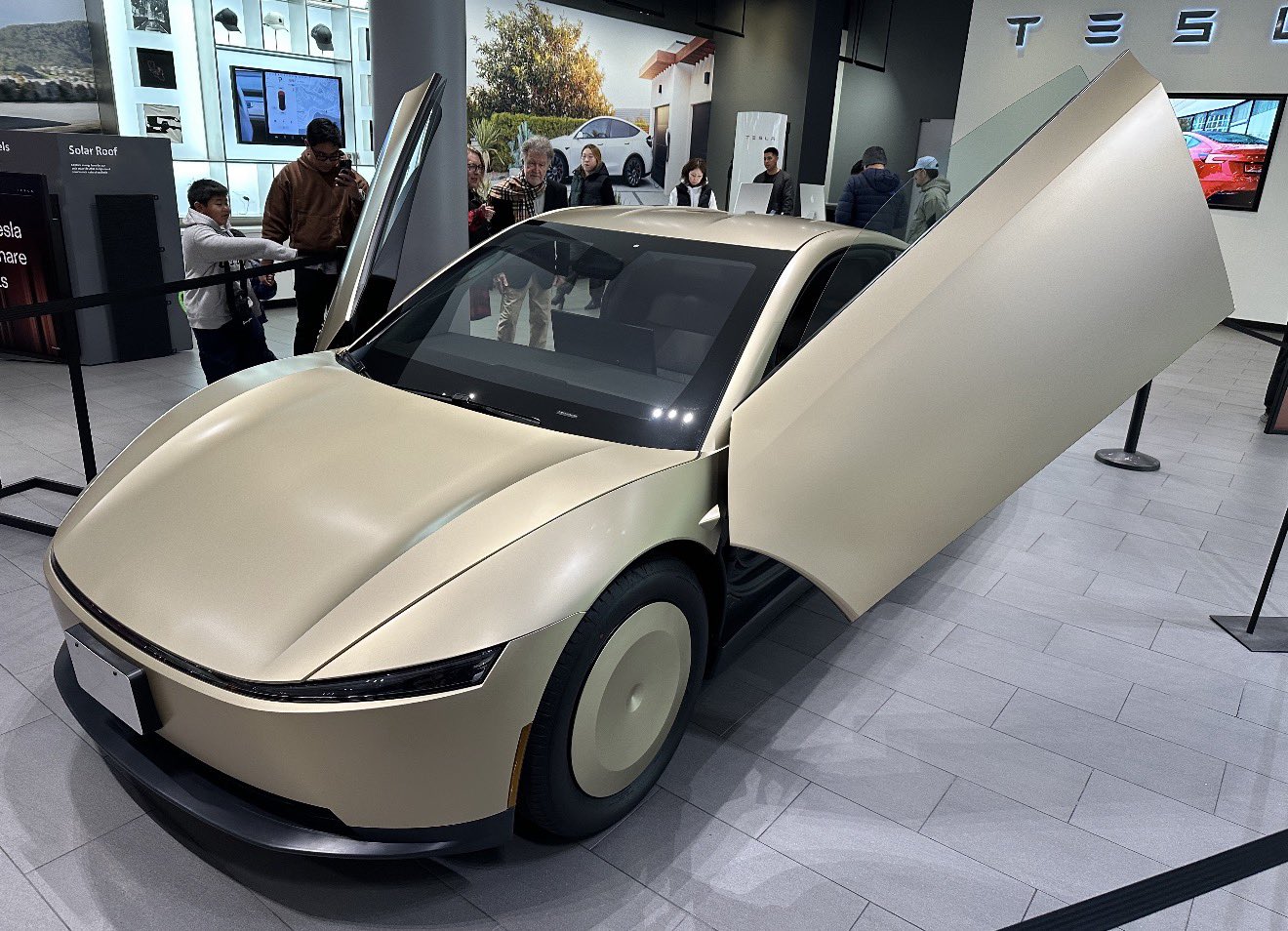
Tesla has showcased what appears to be a near-production-ready Cybercab at its Santana Row showroom in San Jose, California, giving visitors the closest look yet at the autonomous two-seater’s refined design.
Based on photos of the near-production-ready vehicle, the electric vehicle maker has implemented subtle but significant updates to both the Cybercab’s exterior and interior elements, making the vehicle look more polished and seemingly more comfortable than its prototypes from last year.
Exterior and interior refinements
The updated Cybercab, whose photos were initially shared by Tesla advocate Nic Cruz Patane, now features a new frameless window design, an extended bottom splitter on the front bumper, and a slightly updated rear hatch. It also includes a production-spec front lightbar with integrated headlights, new wheel covers, and a license plate bracket.
Notably, the vehicle now has two windshield wipers instead of the prototype’s single unit, along with powered door struts, seemingly for smoother opening of its butterfly doors. Inside, the Cybercab now sports what appears to be a redesigned dash and door panels, updated carpet material, and slightly refined seat cushions with new center cupholders. Its legroom seems to have gotten slightly larger as well.
Cybercab sightings
Sightings of the updated Cybercab have been abundant in recent months. At the end of October, the Tesla AI team teased some of the autonomous two-seater’s updates after it showed a photo of the vehicle being driven through an In-N-Out drive-through by employees in Halloween costumes. The photos of the Cybercab were fun, but they were significant, with longtime Tesla watchers noting that the company has a tradition of driving its prototypes through the fast food chain’s drive-throughs.
Even at the time, Tesla enthusiasts noticed that the Cybercab had received some design changes, such as segmented DRLs and headlamps, actual turn signals, and a splitter that’s a lot sharper. Larger door openings, which now seem to have been teasing the vehicle’s updated cabin, were also observed at the time.








